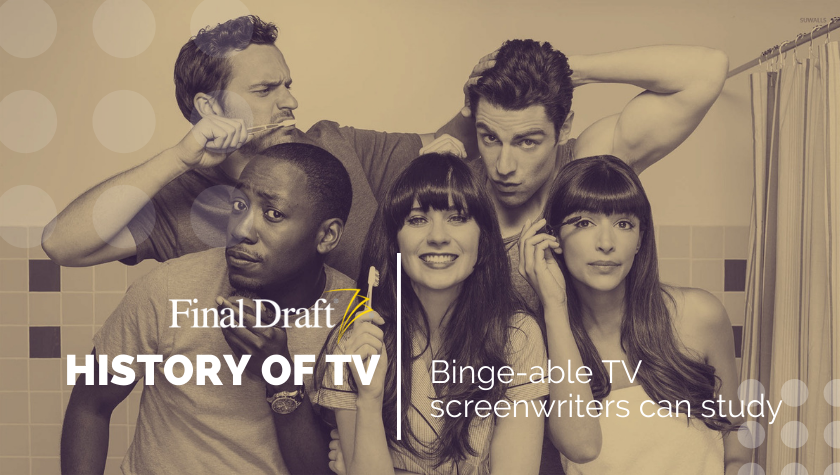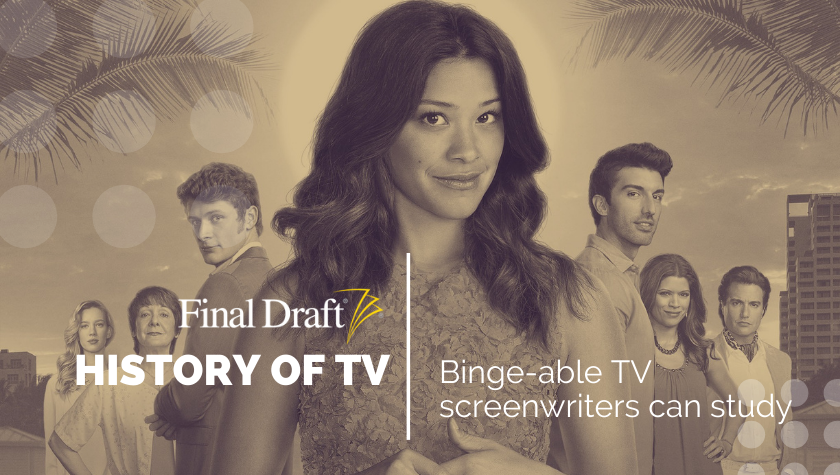History of TV: 'The Walking Dead' is a master class in horror writing
October 21, 2021
There are some shows I know going in that I may never sleep again, and when I watched The Walking Dead pilot for the first time, it was no exception. But I subjected myself to sleepless nights for the same reason I did a decade ago for Scream 4: There are some stories that simply grab hold of the collective consciousness and you just can’t not watch. Must be that whole "right concept at the right time" advice they keep giving us screenwriters, and those stories just had it.
The Walking Dead still has it in fact, making it the only show to be covered in this space so far that’s still on air — but with Halloween right around the corner, and the pandemic ever-so-slowly (way too slowly) receding in our rearview mirror, it felt appropriate to cover a good old-fashioned zombie (post-)apocalypse.
But the fact is, The Walking Dead most likely won’t leave you sleepless for the usual horror suspects: jump scares and gore. Rather, its haunting sequences and underlying pathos are far more terrifying.
'Days Gone Bye'
Appropriately, premiering on Halloween, Oct. 31, 2010, in 120 countries to the tune of 5.35 million made the AMC original the network’s most-watched series premiere. Down the line, the show’s numbers would climb to outshine even Breaking Bad at one point.
But the pilot script in particular is what drew leads Andrew Lincoln (who plays Rick Grimes) and Jon Bernthal (Grimes’ partner, Shane Walsh) to the material as well. Academy® Award nominee Frank Darabont of The Shawshank Redemption and The Green Mile fame wrote it, then reportedly split his script in two and amped up everything in between. This technique helped set the tone immensely, slowing the action to invest in character and, undoubtedly, mimic the walkers themselves: slow, deliberate, and at times surprising.
Aesthetically speaking
The tone of the pilot was also achieved through a beautiful use of sound, or rather, the absence of sound, which intimately brings you into the world of Rick Grimes. Awoken from a coma to find himself in a world gone mad, we are entirely with him as he discovers that the apocalypse had, in fact, happened while he was sleeping. Everything is eerily, deafeningly quiet... other than the buzzing of flies, my friend pointed out. Because that makes total sense with all the dead people; an obscene number of flies.
In addition to the haunting "soundtrack," The Walking Dead’s walkers are a true feat of movie magic. Winning the Primetime Emmy® for Outstanding Prosthetic Makeup For A Series, Miniseries, Movie Or A Special twice and nominated half a dozen times, the show’s "monsters" are achingly real, rather than scary. One of the most poignant moments in the pilot is Rick’s encounter with half a walker. The poor thing is missing her bottom half, dragging entrails as she tirelessly drags herself through a park. Now enlightened to the situation, Rick purposefully finds her, apologizes for her condition, and shoots her out of mercy to end this creature’s suffering. Creating empathy for a zombie? That is some excellent writing right there.
The humanity of it all
From what I know of the horror genre, one of its assets is the ability to explore the human condition in entirely new ways. There is a lot of instinct involved: run away from the bad guy, tune into your fear-o-meter to survive, hold tight to the ones you love. In The Walking Dead opener, right after we’ve been introduced to our first zombie, we go back to a simpler time when Rick and Shane are discussing a most basic aspect of the human condition: the difference between men and women. In the context of a light switch. Now, couple that with what we know about where the show is going (zombies attack! Rick has a wife and kid!) along with long shots of roadkill (again, zombies attack! Humans as roadkill?!) and you immediately understand this isn’t really about the monsters. It’s going to be about how the remaining humans respond to their ordeal; what instincts they give into. The story is about surviving versus thriving, banding together or calling it quits, hoping against hope.
The characters carry the show
And you need a really good cast of characters to carry that off. Yet the sheer lack of characters in the pilot is inspiring. The absence of noise goes beyond the soundtrack; it’s about feeling Rick’s loneliness before he meets Morgan (Lennie James) and Duane (Adrian Kali Turner). As the episode evolves and more follow, we’re slowly introduced to more characters outside of Rick’s point of view. This creates incredible tension as we know his family is still out there — he just doesn’t, which makes that suicide contemplation even more poignant.
As the series carried on season after season, it was breakout characters like Daryl Dixon (Norman Reedus) — who wasn’t even in the graphic novel source material, but is still one of the few to be going strong — and a slew of badass female characters that helped grow the storylines and elevate the show beyond a simple "horror show."
In retrospect
As The Walking Dead lives out its 11th and final season, screenwriters can take a moment to study the pilot script (based on the graphic novel series by Robert Kirkman), which was written by Darabont and co-executive produced by Gale Anne Hurd. Not enough Dead? There’s also a spin-off, Fear the Walking Dead, for even more psychological horror set pre-apocalypse.
Written by: Karin Maxey
After seeing her first big screen movie 007: License to Kill at age six, Karin naturally became obsessed with writing action-infused stories. The next time she’d see Benicio del Toro was in person, at the 68th Cannes Film Festival—he was there for the Sicario red carpet, she was there for her first produced short film in the basement of the Palais…same-same. In between, Karin earned a Creative Writing Degree and landed management at Echo Lake Entertainment. Her scripts have been a Big Break Top 3 finalist, HollyShorts Film Fest Official Selection, and a multi-Screencraft competitions semi-finalist. Karin is also a screenplay editor who delights in the process of polishing writers' work for submission. You can find her at www.writergirlkarin.com.- Topics:
- Discussing TV & Film




